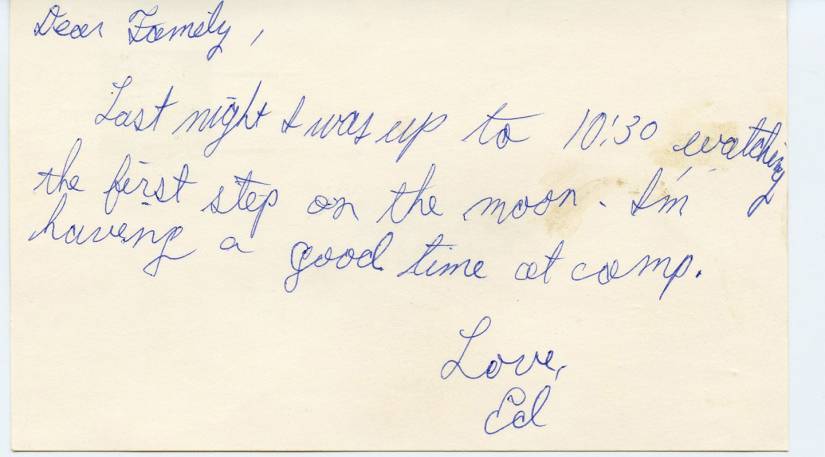
The images are branded into our historical consciousness, but for those who remember watching the live footage on July 20, 1969, it was surreal and heart-stopping: A human being, for the first time, walked on the moon.
It was 10:56 p.m. that Sunday night when Apollo 11 commander Neil Armstrong hopped off the ladder of the Eagle module to take his first steps on the moon’s powdery surface. Buzz Aldrin joined him about 20 minutes later. This was the peak of Walter Cronkite’s multi-hour coverage of the Apollo 11 mission, which had an estimated 650 million viewers around the world glued to their television screens.
With the 50th anniversary of those historic first steps on the moon approaching, the Hub reached out to several Johns Hopkins faculty members and asked them to share their memories of that awe-inspiring time.
Ed Scheinerman
Vice dean for graduate education at the Whiting School of Engineering and professor of applied mathematics and statistics

“Dear family, Last night I was up to 10:30 watching the first step on the moon. I’m having a good time at camp. Love, Ed.”
I found this postcard in a big pile of letters from camp that my parents saved. I was 12 years old at the time of the moon landing, spending my summer at Camp Baco in the Adirondacks. I remember the whole camp getting together for the occasion, watching on a black-and-white TV.
As a kid I watched every space launch I possibly could; I had a standard hero worship of astronauts. In the ’60s every launch was thoroughly televised, they could be very long broadcasts, and I’d be glued to the screen. I remember watching the early Mercury launches and being devastated by the death of astronaut Ed White in Apollo 1.
Later in my life, as I was about to turn 40, I thought, “What am I going to do for my midlife crisis?” (I didn’t actually have one, but felt like I should indulge nevertheless.) On a lark I filled out all the paperwork with NASA to become an astronaut. It was a whim. I heard back from them later: Of course I got rejected! My wife’s greatest fear was that I’d get accepted.
Around 2000, I spent a year away from my normal post at Hopkins—through a grant that puts mathematicians in different environments—and embedded myself in the Department of Mechanical Engineering. One professor was doing experiments with NASA on the KC-135 plane, also known as the vomit comet. I got the chance to get inside and experience zero gravity: 30-second intervals of wonderful weightlessness. And I did not vomit!
Harry K. Charles Jr.
Associate dean at the Whiting School of Engineering, program manager and group supervisor of the APL Education Center
I was 25 years old at the time and working on my PhD in electrical engineering at Johns Hopkins. This was the very same month I met and started dating the woman who, I didn’t know at the time, would later become my wife.
I’d started off on the wrong foot with Virginia—she was planning a date with a friend of mine, and I made some wise-guy comments on the side. She responded with a cold stare. A couple days later I ran into her in the Eisenhower Library (she was also studying at Hopkins, earning her Masters of Education), and I asked her out for a cup of coffee. Our first date was July 10, 1969, and we were engaged by that September.
On the day of the moon landing, Virginia and I went on a date to a local fair in Baltimore then I went home to study. I lived with roommates in an apartment in Wolman Hall and had a black-and-white TV with rabbit ears in my bedroom. That’s where I watched Neil Armstrong walk on the moon.
Seeing it was surreal—you could hardly believe it was true, and yet there it was. People were talking about it for a long time before and a long time afterward. It’s one of those seminal events in life where you remember exactly where you were.
I was particularly interested in space because I’d worked with NASA as a co-operative education student during my undergraduate program at Drexel. Following graduation, I spent two summers down at Goddard [Space Flight Center], tracking satellites. Even though we weren’t in Houston, the center was very excited about what was going on with Apollo 11.
For my wife and I, the Apollo 11 anniversary comes right after the 50th anniversary of our first date. Last week we were down in New Orleans celebrating that. And next March, we’ll be celebrating the 50th anniversary of our wedding.


